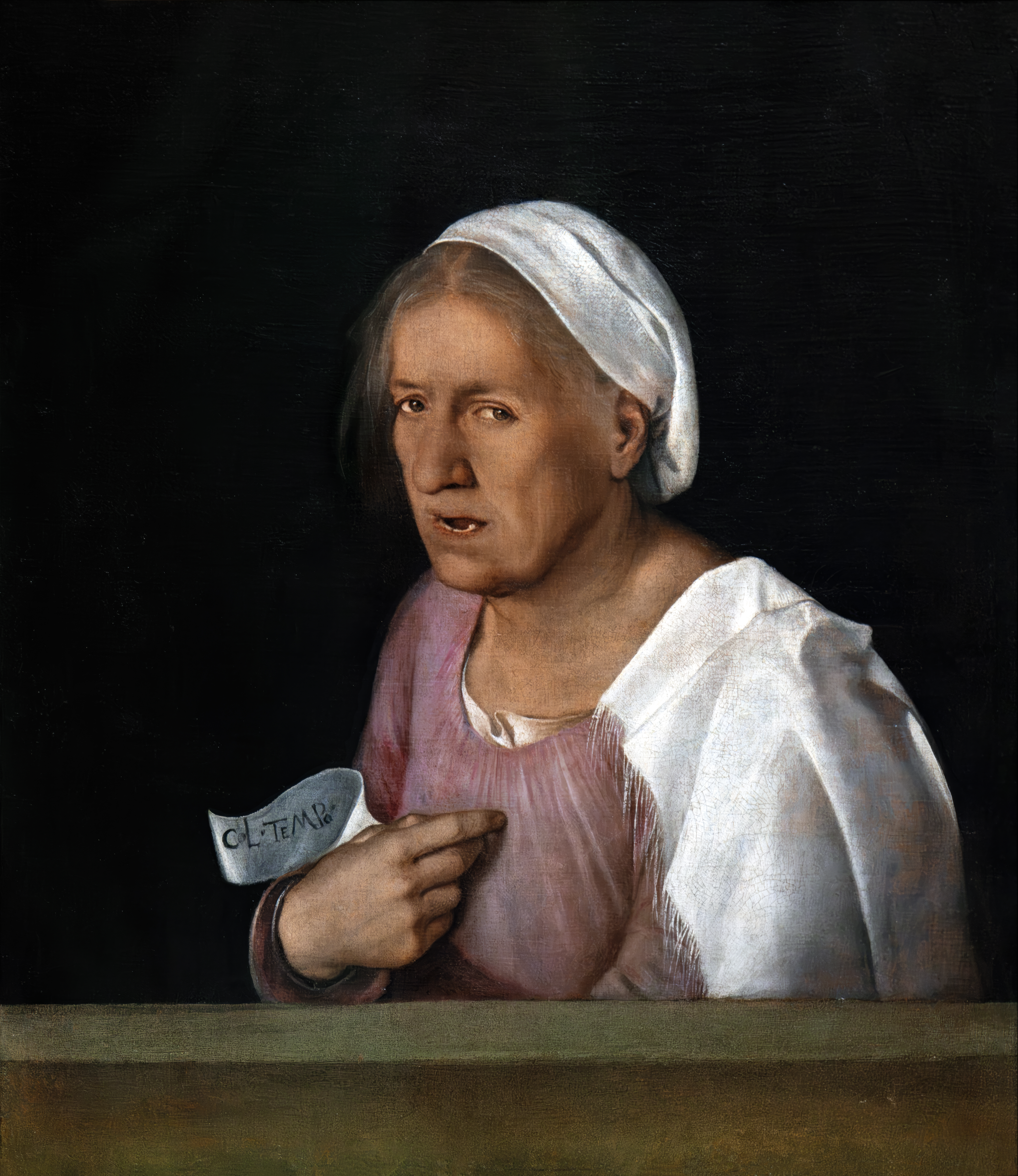Avarice (Dürer, Vienna) on:
[Wikipedia]
[Google]
[Amazon]
''Avarice'' (German: ''Allegorie des Geizes'') is a small (35 × 29 cm) oil-on- Intended to represent both
Intended to represent both
limewood
''Tilia'' is a genus of about 30 species of trees or bushes, native throughout most of the temperate Northern Hemisphere. The tree is known as linden for the European species, and basswood for North American species. In Great Britain and Irelan ...
painting of 1507 by Albrecht Dürer
Albrecht Dürer ( , ;; 21 May 1471 – 6 April 1528),Müller, Peter O. (1993) ''Substantiv-Derivation in Den Schriften Albrecht Dürers'', Walter de Gruyter. . sometimes spelled in English as Durer or Duerer, was a German painter, Old master prin ...
(1471–1528). The work is found on the reverse of his '' Portrait of Young Man''; it has been speculated, though it is impossible to know, that they were intended to form part of a diptych
A diptych (, ) is any object with two flat plates which form a pair, often attached by a hinge. For example, the standard notebook and school exercise book of the ancient world was a diptych consisting of a pair of such plates that contained a ...
. ''Avarice'' is allegorical
As a literary device or artistic form, an allegory is a narrative or visual representation in which a character, place, or event can be interpreted to represent a meaning with moral or political significance. Authors have used allegory throughou ...
and serves as a warning at both the transience of life and the ultimate worthlessness of earthly fortune. It is generally grouped, along with ''Melencolia I
''Melencolia I'' is a large 1514 engraving by the German Renaissance artist Albrecht Dürer. Its central subject is an enigmatic and gloomy winged female figure thought to be a personification of melancholia – melancholy. Holding her head in ...
'', as one of Dürer's vanitas
''Vanitas'' is a genre of symbolizing the temporality, transience of life, the futility of pleasure, and the certainty of death, and thus the vanity of ambition and all worldly desires. The paintings involved still life imagery of transitory i ...
images.
 Intended to represent both
Intended to represent both avarice
Greed (or avarice, ) is an insatiable desire for material gain (be it food, money, land, or animate/inanimate possessions) or social value, such as status or power.
Nature of greed
The initial motivation for (or purpose of) greed and a ...
and the passing nature of youthful beauty, the woman is shown in half-length, painted in thick impasto
Impasto is a technique used in painting, where paint is laid on an area of the surface thickly, usually thick enough that the brush or painting-knife strokes are visible. Paint can also be mixed right on the canvas. When dry, impasto provides tex ...
.Sturge Moore, 207 She has long and straight blond hair, glazed eyes, a long nose, a pinched jaw and a mouth with only two remaining teeth, which is twisted in a scornful laugh. Her visible right arm is muscular and out of proportion to the rest of her body, while a dark tuft of hair sprouts from her underarm. Only her hair and the regular and almost noble outlines of her face hint at former beauty. The intense focus of the image is achieved by tight cropping and the contrast between the lush colouring of the woman's gown and hair against the flat black background.Silver & Smith, 246
Art historians have compared the work to a Giorgione
Giorgio Barbarelli da Castelfranco (; 1470s – 17 September 1510), known as Giorgione, was an Italian painter of the Venetian school during the High Renaissance, who died in his thirties. He is known for the elusive poetic quality of his work, ...
sque canvas ''Col tempo'' (''With age''), with which it shares obvious thematic similarities, while Dürer's use of impasto and the rich colouring in the foreground display a debt to the Venetian school. The art historian T. Sturge Moore suggests that Dürer may have wanted to show that he could paint like Giorgione.Sturge Moore, 207–208 Others believe that the work is a satire on a sitter who had not paid him as much as he might have wished for an earlier portrait. However, given the artist's financial situation at this time, it seems unlikely that he would have deliberately offended potential patrons or customers. Writer Jessie Allen discounts this theory and believes that the work was likely unable to attract a buyer and to save money, Dürer used the other side of the canvas to create a commercially viable image.Allen, 105 The work is often seen as unfinished and is sometimes referred to as a sketch.
''Avarice'' is held in the Kunsthistorisches Museum
The Kunsthistorisches Museum Wien ( "Vienna Museum of art history, Art History", often referred to as the "Museum of Fine Arts, Vienna") is an art museum in Vienna, Austria. Housed in its festive palatial building on the Vienna Ring Road, i ...
, Vienna
Vienna ( ; ; ) is the capital city, capital, List of largest cities in Austria, most populous city, and one of Federal states of Austria, nine federal states of Austria. It is Austria's primate city, with just over two million inhabitants. ...
. It is in good condition, and the colours retain their vibrancy.
It is titled "Allegorische Frauenfigur/Allegorical Female Figure" by the Kunsthistoriches.
Notes
Sources
* Allen, Jessie. ''Albert Dürer''. Kessinger, 2005. * Bailey, Martin. ''Dürer''. London: Phidon Press, 1995. * Silver, Larry & Smith, Jeffrey Chipps. ''The Essential Dürer''. University of Pennsylvania Press, 2010. * Sturge Moore, T. ''Albert Dürer''. Bastian Books, 2008. * Thausing, Moriz. ''Albert Dürer: His Life and Work, Part 1''. Kessinger Publishing, 2003. {{DEFAULTSORT:Avarice Paintings by Albrecht Dürer 1507 paintings 16th-century portraits Paintings in the Kunsthistorisches Museum Paintings of women